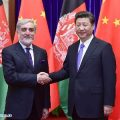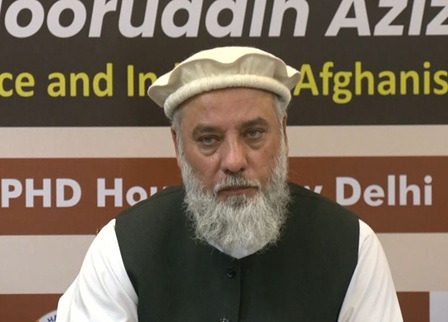
By: Ahmad Jawed Samsor –
None of higher education institutions in Afghanistan has ever been evaluated or ranked by an international or regional ranking body, in other words the institutes have not yet met the minimum requirements to be ranked or be placed in one of those lists.
On the other hand, the Ministry of Higher Education (MoHE) has constantly failed in last 14 years to establish or propose the structure for an independent Quality Assurance and Certification (QA&C) body within the country. There has been no mention or sign of such body in National Higher Education Strategic Plan (NEHSP) 1, 2 and 3. The QA&C body is very common in other countries and has functioned independently. Their main objective is to assess higher education institutes for quality assurance and to award, cancel or put on probation their activities. Currently universities in Afghanistan are applying for accreditation to regional or international bodies, such as the Asia Pacific Quality Assurance body, the Accreditation Council for Business Schools and Programs (ACBSP), Association to Advance Collegiate Schools of Business (AACSB), and International Assembly for Collegiate Business Education (IACBE).
What has been more observant in the last years is that three major universities, all of which are located in the capital, Kabul, have systematically dominated the MoHE. Kabul University, also known as mother of universities, the Kabul Medical University, which used to be part of Kabul University and has later been separated as independent institute, and the Kabul Polytechnic University (KPU), which was supported by soviet education system for a long time.
Interestingly, there has been a serious conflict of interest that has never been addressed by the MoHE itself and the Government of Afghanistan. For example, the existing bylaws in the Higher Education system allows only university instructors and professors to fill the higher level administrative positions (i.e. Manager, Director, General Director and the DeputyMinister) at MoHE, while they are required to teach at least 4 hours a week at a public university. Basically, these lecturers and professors have two jobs at the same time. If one tends to develop an organizational chart for MoHE, it would be no surprise to identify staff members that are their own supervisors in one way or the other. Based on basic management concepts, the staff members in an organization can be appointed in different roles but that strictly has to be horizontal in terms or reporting and supervision. 
The entrance door of Ministry of Higher Education (MoHE), Afghanistan
The MoHE has been identified an under spending Ministry in last 14 years because of poor planning and inconsistency between the MoHE strategic plan and the Ministry’s Mission and Vision. Most importantly, the MoHE’s mission and vision has been very vague in terms of the market demands on country or regional level, quality of education and or introducing new programs to fill the existing gaps or meet the new needs. In the NHESP 3, 2015-2020, MoHE focused on infrastructure, new buildings for new or existing universities, building hostels for female students in provinces where access to education is the major issue, and the entrance examination (i.e. Kankor). There is little or no mention of important issues in higher education such as access to higher education in rural areas, especially for female students, lack of human capacity in the provincial universities, financial and operational autonomy of public universities, National Quality Assurance and Certification Body, and development of new programs. In other words the NHESP3, like NHESP 1 and 2, prioritized infrastructure, leaving limited room for other important matters.
Taking this further, the MoHE is being supported by two multimillion dollar projects, the University Support and Workforce Development Project (USWDP) implemented by FHI360, funded by the United States Agency for International Development (USAID), and the Higher Education Development Project (HEDP) funded by the World Bank Group. The USWDP functioned under a different name for a few years but because of its underperformance, the project had to shutdown and was re-awarded to an international consulting company, whose major area of expertise is public health and research. With the fact that the support of international experts and the donors existed for a long time, the MoHE has been unable to identify the higher education priorities and develop a more consistent strategic plan for the upcoming five years. Also, the supporting projects funds fewer and more dominant public universities, which discourages newly established public universities and universities in the provinces to perform better.
Clearly this is the failure of the MoHE, which is responsible for defining the higher education road map of Afghanistan. So how worse can it become? And what are the possible remedies?
Students during the National Higher Education Entry Test (i.e. Kankor)
Foremost of all, we need to revisit the MoHE. Because the new government has shown dedication to reforms, the following proposal can strongly help in defining the role of higher education in Afghanistan and develop a road map that is not only clear but also can answer the market need, both in public and private sector, quality education, access to higher education by male and female and paving the path for research.
To begin with, formation of a Higher Education Task Force to revisit the MoHE and come up with recommendations addressing the major issues of restructuring, existing bylaws of MoHE, quality of education, universities autonomy, access to higher education, and revised functions of both public universities and the MoHE.
Universities should have the right to function independently in important matters such as the entrance exam, development of a strategic plan, proposing new programs, hiring and firing of academic and administrative staff, and graduation of students. The role of the MoHE can be confined to maintaining standards and overseeing. On the other hand, Quality Assurance must be carried out by an autonomous body, much like the Quality Assurance Agency (QAA) in UK, and not by the MoHE. Also, the MoHE have no role in ranking universities as that would be a conflict of interest. These anomalies have to be stopped.
The support by the MoHE and the supporting projects to public universities should be based on performance and should not be affected politically.
Universities should be given full autonomy. Today, political governments ensure that people of their interest get appointed as chancellors, faculty deans or directors. All appointments must be made internally by the university bodies through a transparent and merit-based mechanism of search committees rather than the MoHE.
Vice Chancellors (VCs), who should be superstars, must be appointed by a search committee of distinguished professionals, which must include at least one member from the private sector. The VC, once appointed, must be evaluated for performance at the end of their second or third year by an independent external body, and make a recommendation to the appointing authority on their extension or end of contract. A detailed criteria for assessment of VCs should be developed to ease the process.
Higher education is the single most important pillar of a knowledge economy. Afghanistan’s higher education system needs to be reengineered effectively to perform better according to regional and global standards.
———————————
Short Bio of the Author:
Ahmad Jawed Samsor is an entrepreneur with several years of experience in the private sector and higher education sector of Afghanistan. He remained in executive roles in different settings; he played a key role in achieving international accreditation for National Institute of Management and Administration (NIMA), Afghanistan in 2015. In addition to his executive role, he is working on introducing innovative technology solutions in health, education and development sectors. To read more about the author please refer to his LinkedIn.









